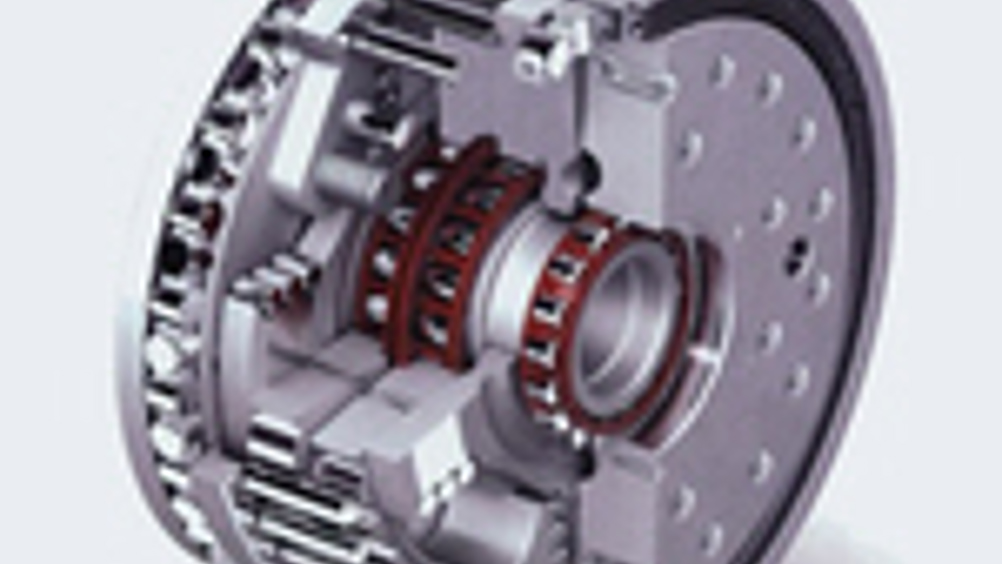Bearing cross bears the load
Tom Shelley reports on rugged speed reducers designed to deliver maximum torque in the space available with high stiffnesses and negligible backlash

A high ratio speed reducer is particularly suited to withstanding high torques and shock loads because of its patented internal bearing arrangements.
The most striking feature of the internals of the 'TwinSpin' series of reducers, made by Spinea in Presov in the Slovak Republic is the bearing cross, called the 'Transformation Member' by the makers. This distributes the load transmitted by the planetary motion of the gears to the rotary motion of the flanges. The other patented feature that makes these products unique is their radial axial bearings.
Reduction ratios of from 35:1 to 191:1 are achieved by the eccentric motion of the inner gear, which is walked round the outer ring gear, which has a slightly greater number of teeth. This type of motion is called, 'Trochoidal', which means that it is made up of two uniform rotations with different angular velocities. The gear teeth in the reducer are specially shaped so that several teeth are always engaged with each other when undergoing this motion to improve torque transmission and virtually eliminate backlash.
The examples we saw at the Electric Automation show in Nuremburg were beautifully made and ran completely smoothly.
They come in four versions, designated 'B', 'H', 'E' and 'T'. The 'T' series is the standard product ranging in size from 60mm to 300mm in diameter. Rated output torques are up to 2940Nm for the largest units, with acceleration and braking torques up to 7350 Nm. Tilting stiffness of the largest units is 3500 Nm/arcmin and torsional stiffness, 680 Nm/arcmin, figures not normally given by makers of such devices. Maximum lost motion is less than 1 arcmin. Being packed with bearing rollers and solid steel, which is what makes them so robust, weights range from 0.86kg for the smallest unit to 56kg for the largest.
The 'E' series units are oil filled and sealed for life. The 'H' in the H series units means they work with hollow shafts for cables, tubes or additional internal shafts. The 'B' series are completely sealed units designed for applications relating to the B-axes of machine tools. They have an approximately 50% greater tilting stiffness with respect to 'T' series units, 3000Nm/arc min versus 1800 Nm/arc min for 240mm diameter units and high torsional stiffness, 350 to 380 Nm/arcmin. They also exhibit low lost motion, 0.6 arcmin, plus extremely low values of radial and axial run out at the output flange, 6 microns in each case.
Application engineer Peter Semanco told us, when we met him, that his main competitors were the Sumitomo Cyclo and Harmonic drives, but he felt his were better.
Applications have been found in robotics, machine tools, automated welding machines, medical equipment, textile machines, automated handling equipment and antenna positioning. Reduction ratios of less than 30:1 are available on request, but the company cautions that this results in a substantial increase in transmission error. Prices of standard units start at around 500 euros.
Spinea s.r.o
Pointers
* Units incorporate roller bearings on all moving surfaces, including the cross shaped, transformation member that transmits the rotary motion of the gears to the rotary motion of the flange.
* The units exhibit high torque and shock resistance capabilities as well as very high stiffness and negligible backlash










